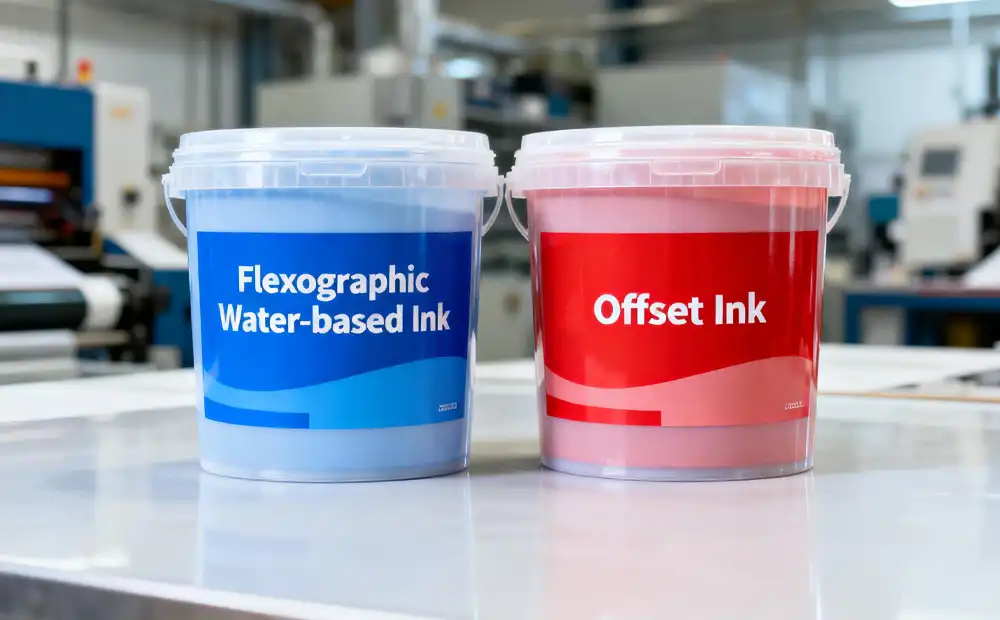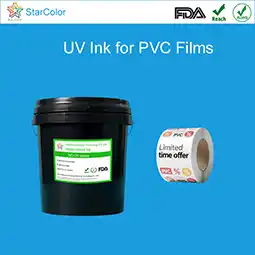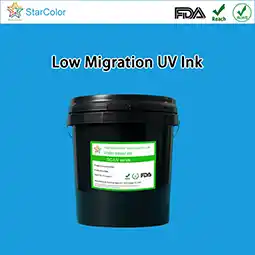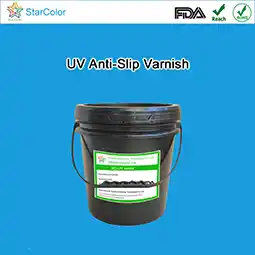Flexographic ink is more environmentally friendly than offset ink
Date: Jul 30 2024 From: Star Color Views:
Flexographic ink and offset ink, as two mainstream printing ink systems, differ significantly in their environmental performance. Data shows that the VOC emissions of flexographic inks are on average 60%-80% lower than those of offset inks. They also outperform offset inks in terms of formulation safety, waste management, and energy efficiency. Let’s take a closer look at the key differences between the two.
1. VOC Emissions
VOCs (Volatile Organic Compounds) are one of the main air pollutants generated by the printing industry. They contribute to ozone formation and pose potential health hazards. The VOC differences between flexographic and offset inks stem from their distinct solvent systems and drying mechanisms, reflected in both source control and end-of-pipe emissions.
1.1 Flexographic Ink: Low-VOC System with Intrinsic Control
The two dominant types of flexographic inks — water-based inks and UV-curable inks — are inherently low in VOCs:
- Water-based flexo ink: Uses deionized water as the main solvent with a small amount of co-solvent. VOC content typically ranges from 30–80 g/L, with premium formulations as low as 10 g/L — far below the GB 38507-2020 limit of 100 g/L for packaging inks.
- UV flexo ink: Cures through ultraviolet-induced polymer crosslinking without solvent evaporation. VOC content ≤50 g/L, nearly “zero-emission,” and any minor monomer evaporation can be controlled with a sealed ink supply system.
1.2 Offset Ink: High-VOC Solvents and Difficult Emission Control
Traditional offset inks rely heavily on solvent-based systems due to the oil-water repulsion principle of lithography:
- Solvent composition: Typically includes toluene, xylene, and ethyl acetate — accounting for 30–50% of the formulation. VOC levels reach 300–500 g/L, 5–10 times higher than water-based flexo inks.
- Drying mechanism: Offset inks dry via solvent evaporation. This slow process depends on ventilation, and even with hot air, residual solvents in micro-pores remain high, causing unorganized VOC release.
Moreover, solvents like toluene and xylene are toxic, posing both environmental and occupational health risks.
2. Ingredient Safety
The safety of ink ingredients directly affects both environmental impact and end-use safety. Flexographic inks are designed for low-toxicity and low-migration performance, while offset inks often contain hazardous components.
2.1 Flexographic Ink: Safe and Certified Formulation
Flexo inks are widely used in food and pharmaceutical packaging due to their compliant compositions:
- Resins: Use acrylic and polyurethane resins that meet FDA 21 CFR 175.300 and EU 10/2011 standards, avoiding rosin or phenolic resins that may release formaldehyde.
- Pigments: Employ organic pigments with heavy metals (Pb, Cd, Hg) ≤0.001 mg/kg — well below the GB 4806.14-2023 limit of 1 mg/kg.
- Additives: Contain food-grade defoamers and film-forming agents, free of cobalt or manganese driers and allergenic alkylbenzene sulfonates.
2.2 Offset Ink: Hidden Risks and Poor Safety
- Resins & solvents: Rosin resins may release abietic acid; phenolic resins may emit trace formaldehyde; and solvents like toluene and xylene can migrate into food or children’s products.
- Additives: Metal driers (Co, Mn) often exceed 1 mg/kg; antistatic agents can cause skin irritation — unsuitable for products that contact skin or food.
3. Waste Management
Waste handling efficiency is another key environmental metric. Flexographic inks generate less hazardous waste, reducing disposal costs and compliance risks.
3.1 Flexographic Ink: Easy and Low-Cost Disposal
- Waste ink & cleaning fluid: Water-based flexo inks can be cleaned with water. Wastewater after coagulation and filtration has COD around 500–800 mg/L and can be safely discharged. UV inks generate minimal waste and can be cured and treated as non-hazardous solids.
- Printing plates & consumables: Photopolymer plates are recyclable (up to 80% reuse) or incinerable without releasing toxins. Anilox rolls are cleaned without strong solvents, minimizing hazardous waste.
3.2 Offset Ink: Complex and Hazardous Waste
- Waste solvents: Offset cleaning uses toluene or ethyl acetate. Waste liquid COD reaches 3000–5000 mg/L, containing toxic substances (classified as HW49 hazardous waste) and costing over 10 RMB/kg for treatment.
- Plates & consumables: PS plates contain photoresist and aluminum, generating hazardous waste during stripping. Rubber blankets contaminated with solvents must also be treated as hazardous waste.
4. Energy Consumption
Energy usage during drying significantly impacts carbon emissions. Flexographic inks dry more efficiently, aligning with carbon neutrality goals.
4.1 Flexographic Ink: Fast Drying, Low Power Use
- Water-based flexo ink: Dries at 40–60°C using low-energy hot air (approx. 0.3 kWh/m²). Some lines achieve near room-temperature drying.
- UV flexo ink: Cures via LED-UV lamps (30–50W/cm) in 0.5–1 second, with energy use around 0.1 kWh/m² — one-fifth that of offset ink.
4.2 Offset Ink: High Temperature, High Energy Demand
Offset inks require hot air and strong ventilation for solvent evaporation, consuming 0.5–0.8 kWh/m² per drying cycle. Multi-color printing increases energy demand further. The high air-conditioning load in offset workshops adds over ¥150,000 in annual energy costs.
Conclusion
From VOC emissions and formulation safety to waste management and energy efficiency, flexographic inks outperform offset inks in all aspects of environmental sustainability. This shift reflects not only technological advancement but also the printing industry’s commitment to carbon reduction and compliance with evolving environmental regulations.
 RU
RU EN
EN CN
CN















